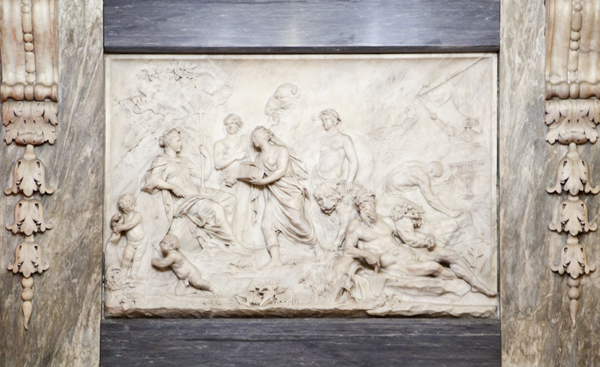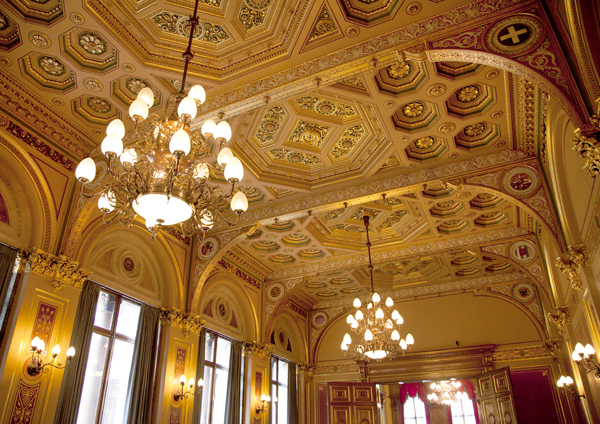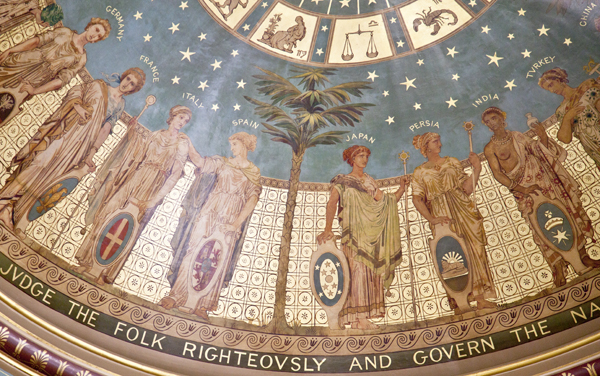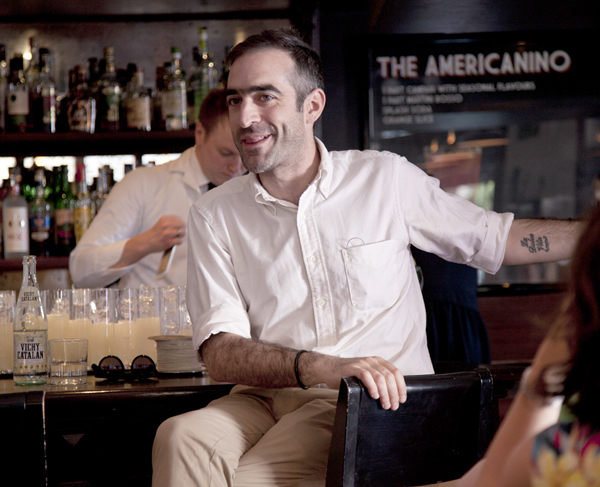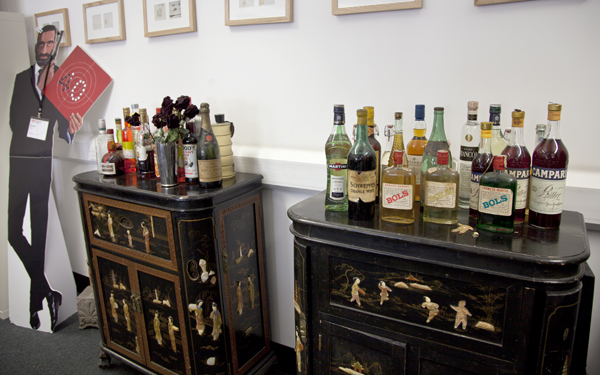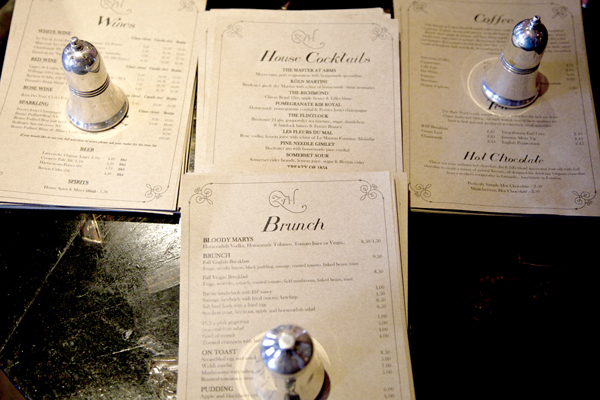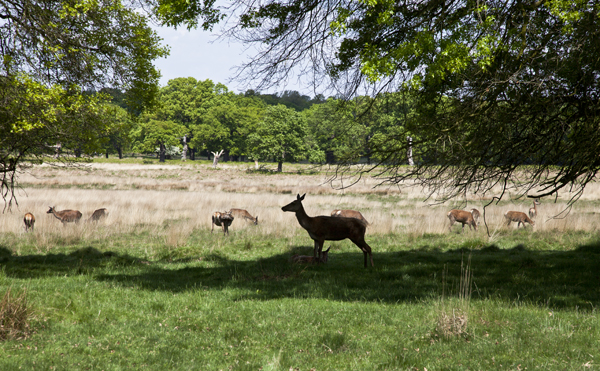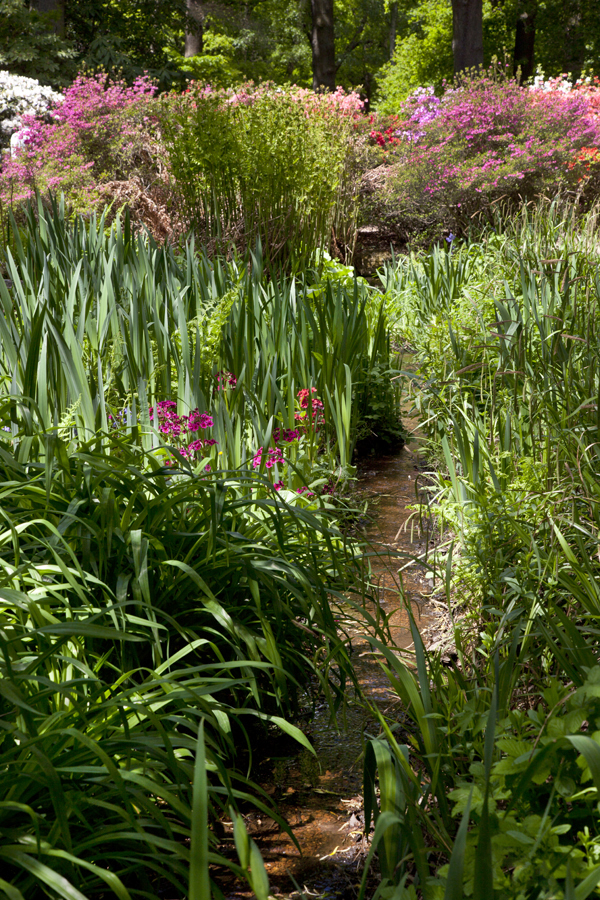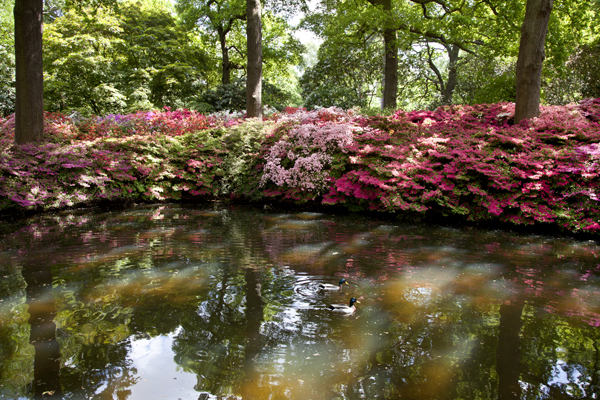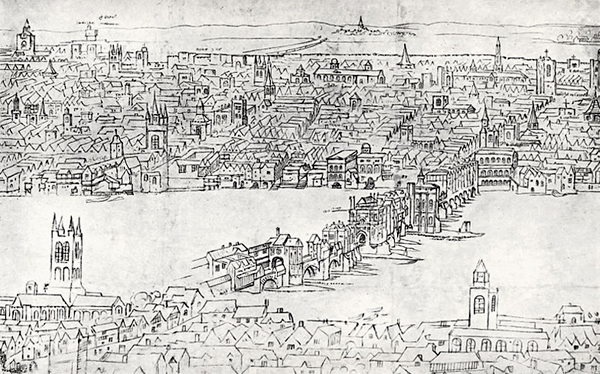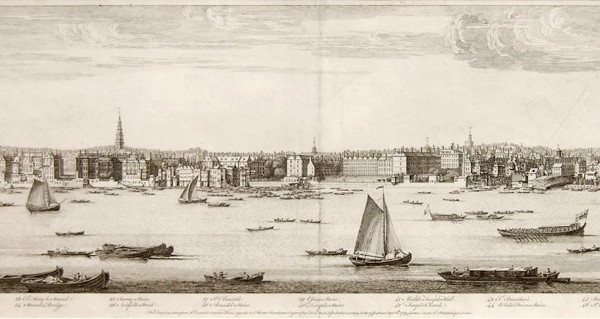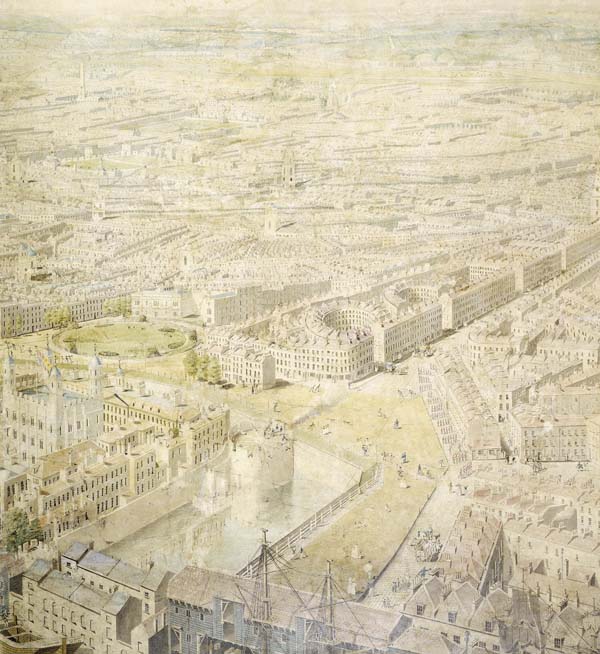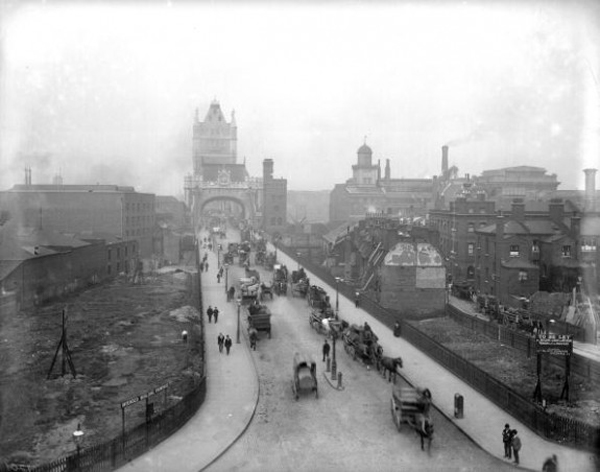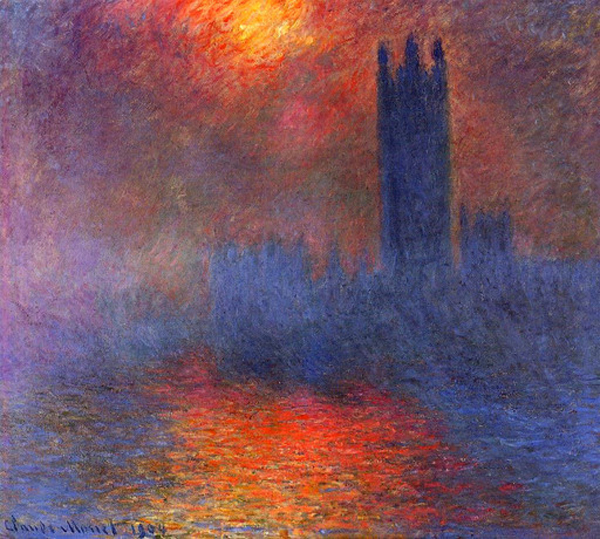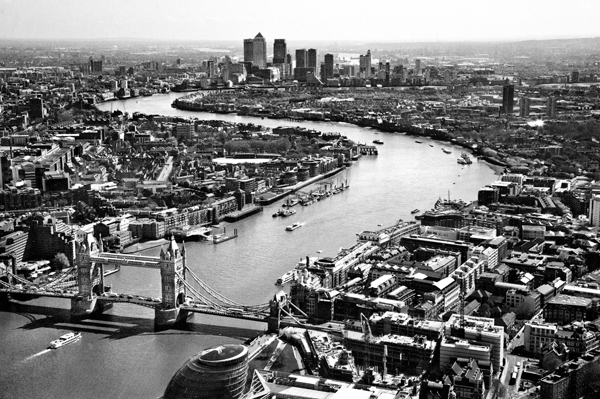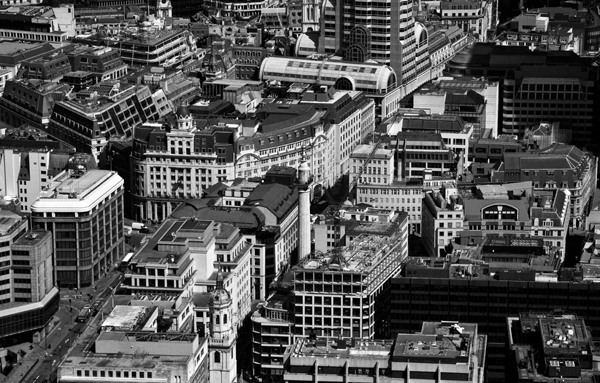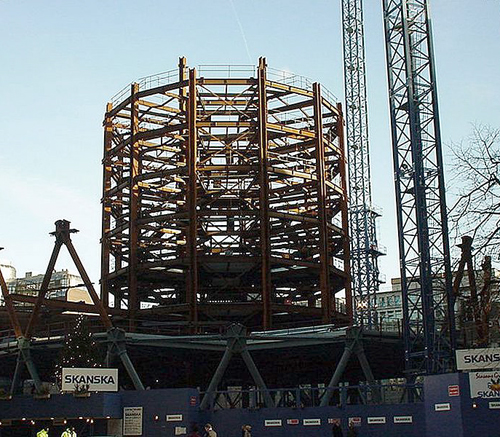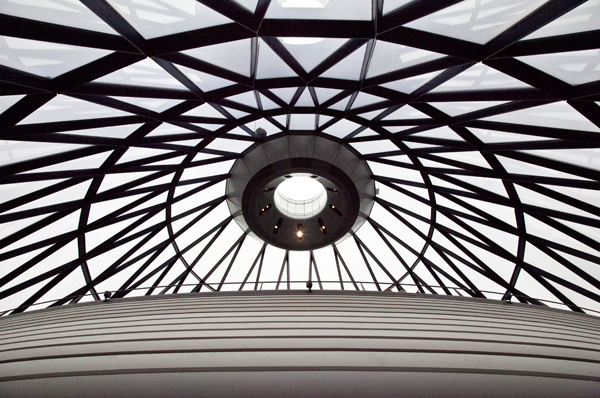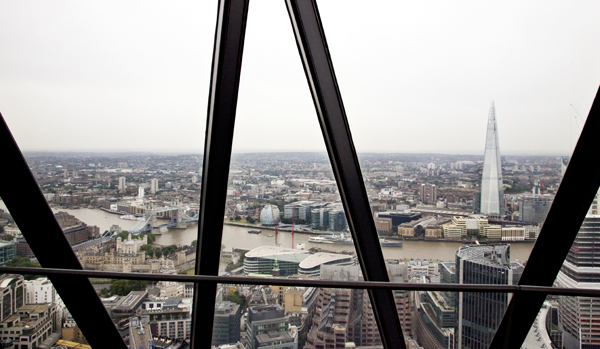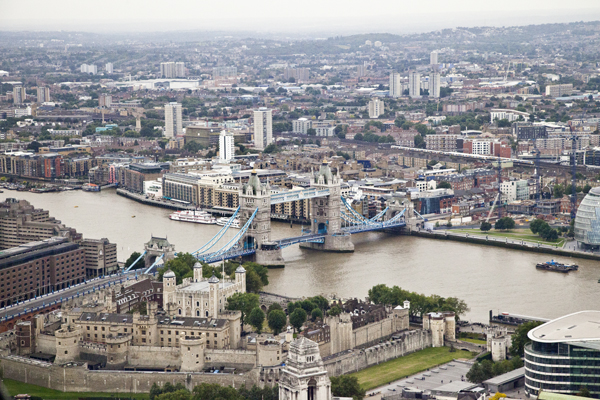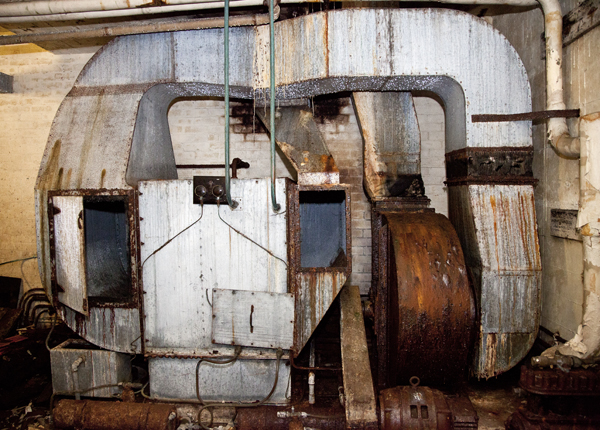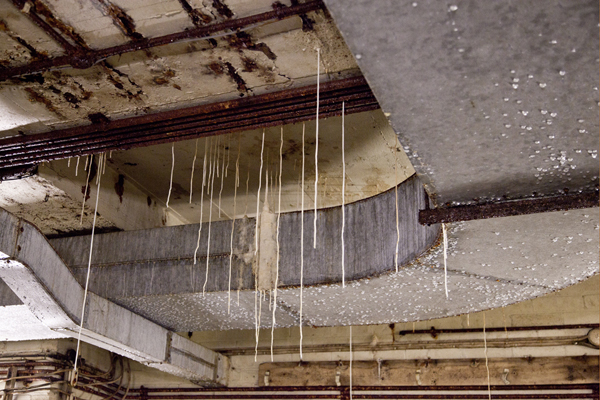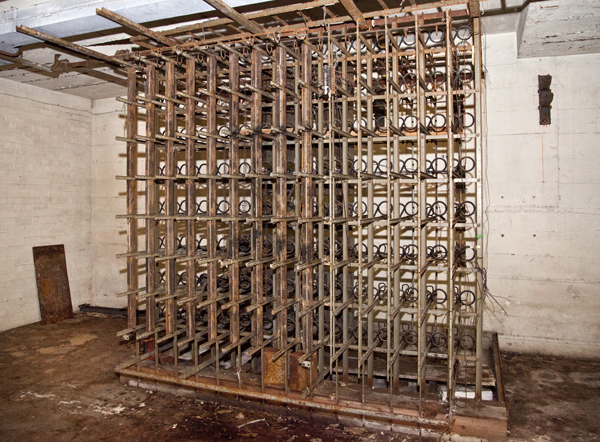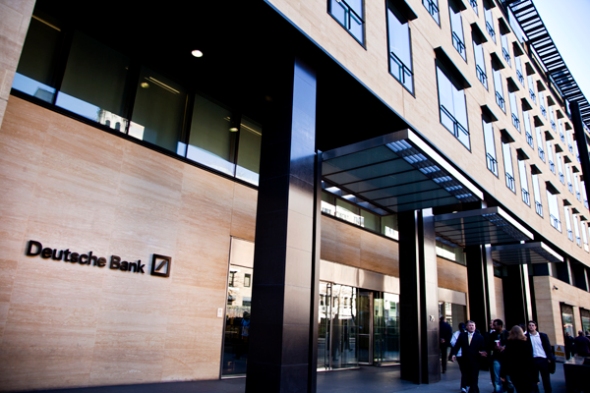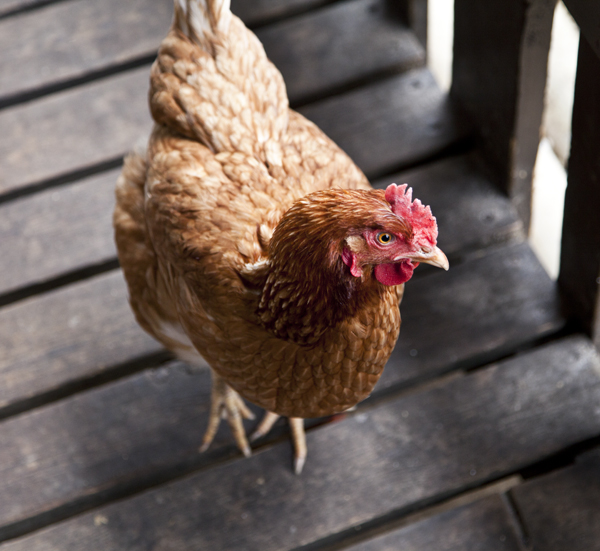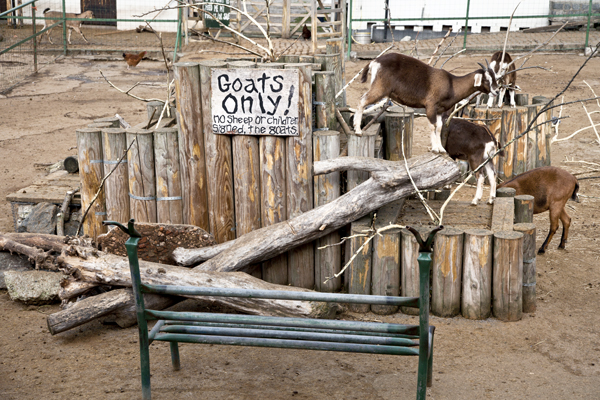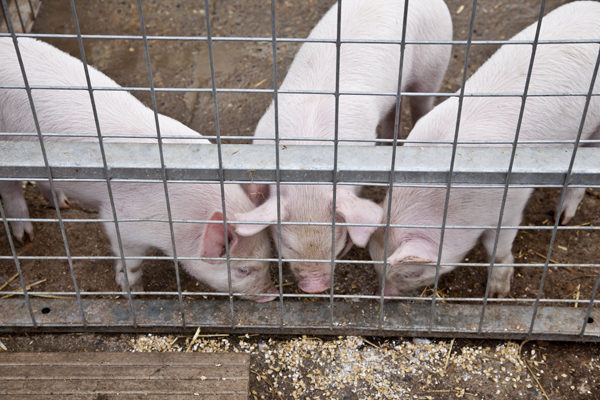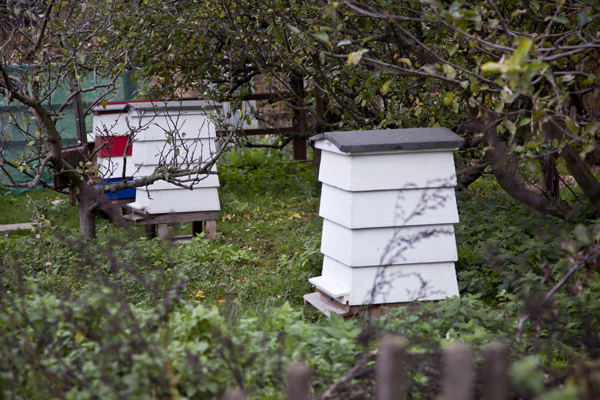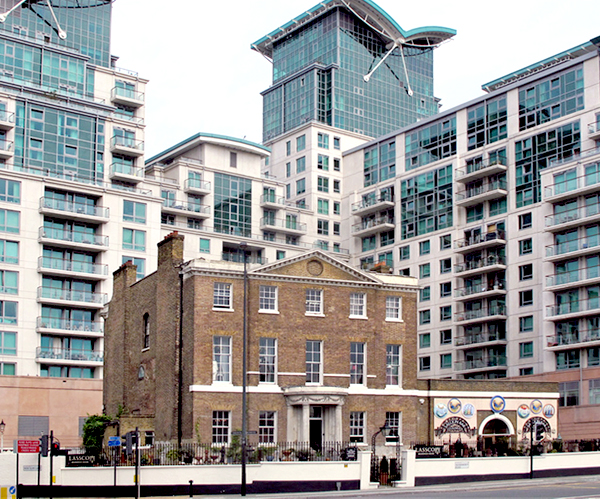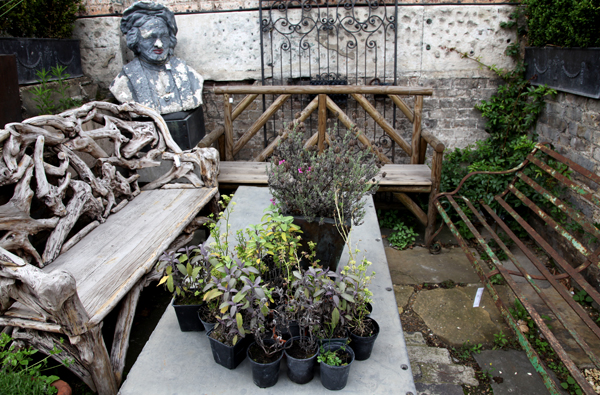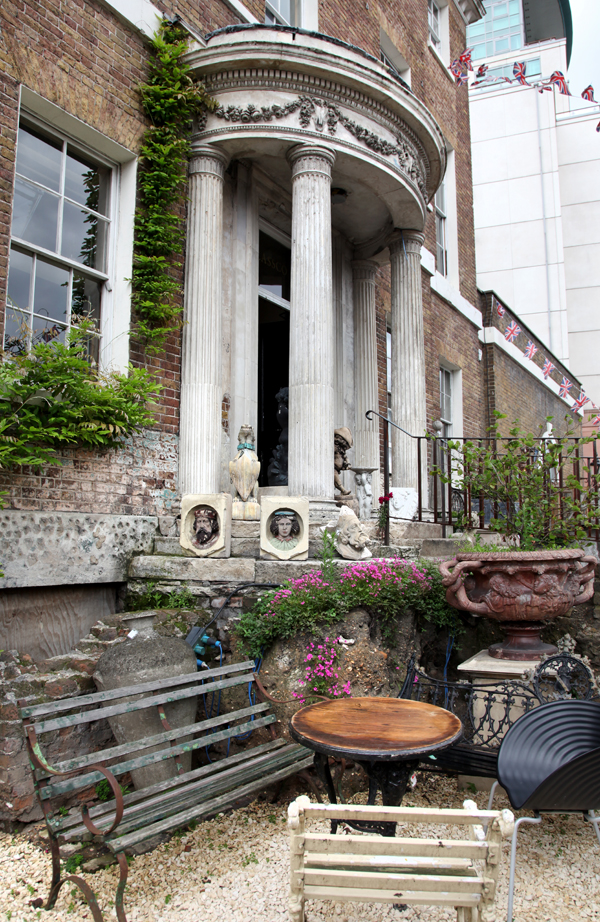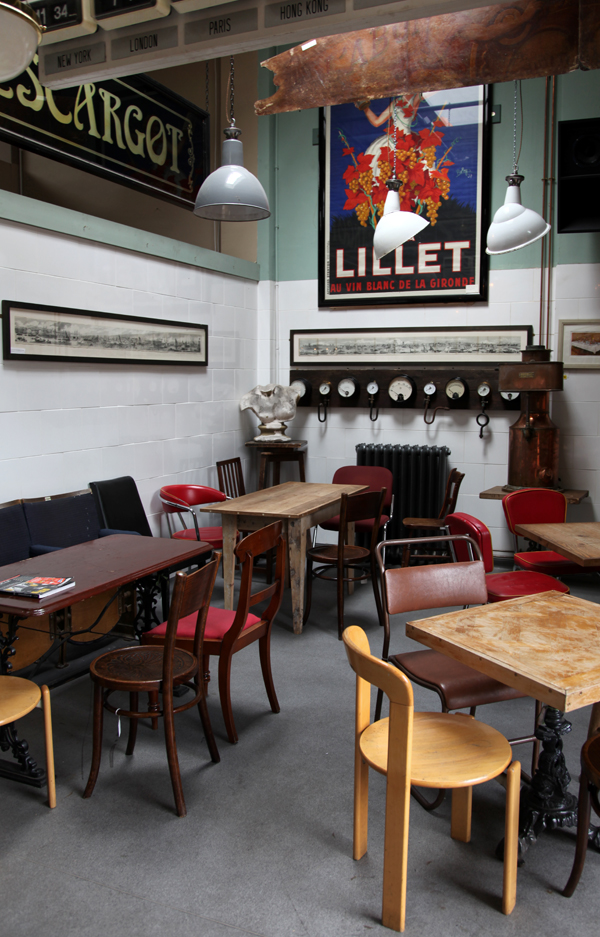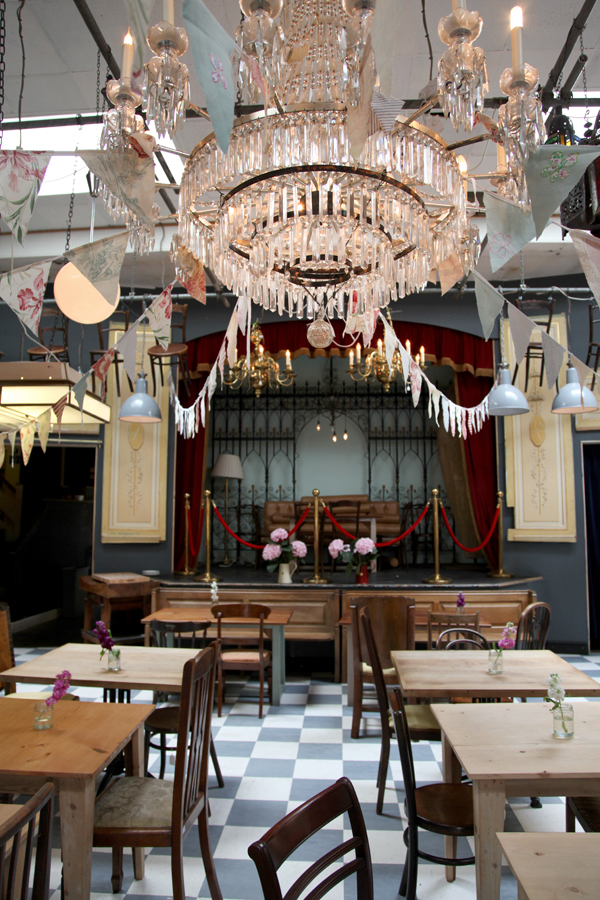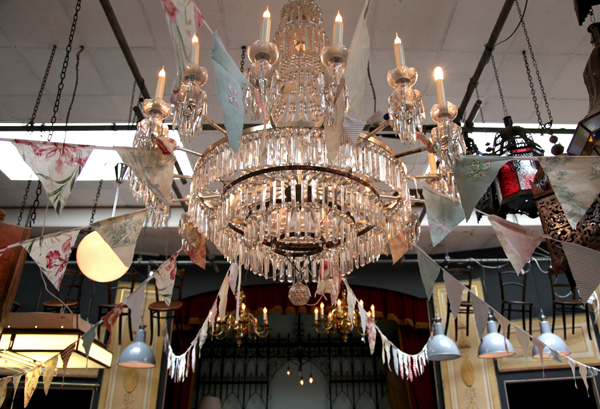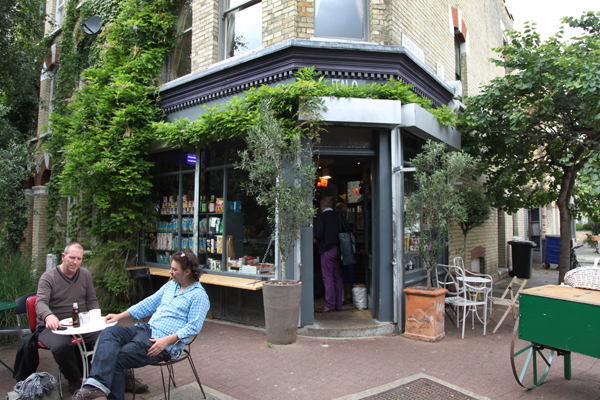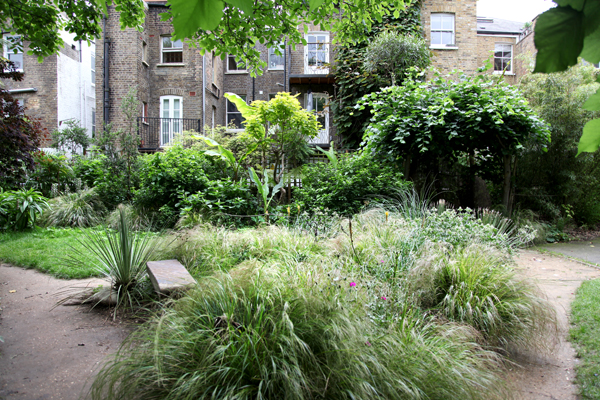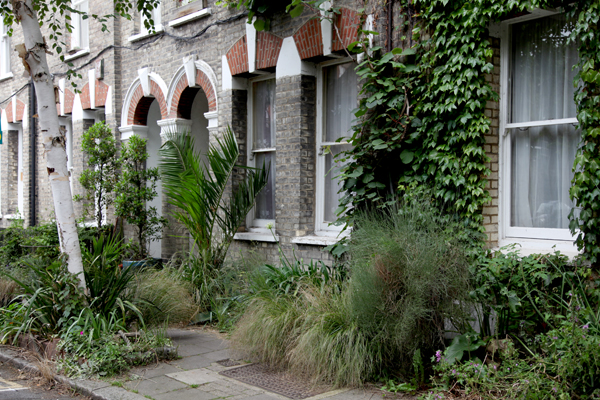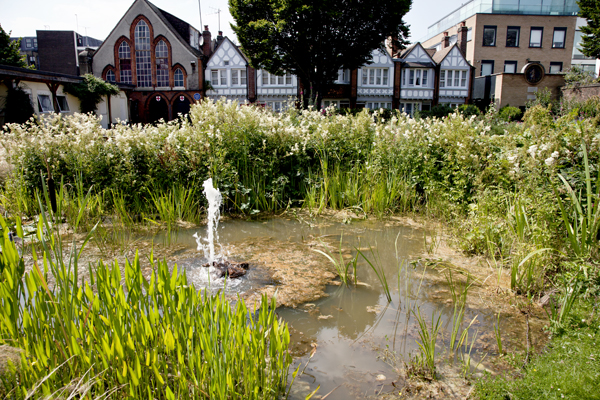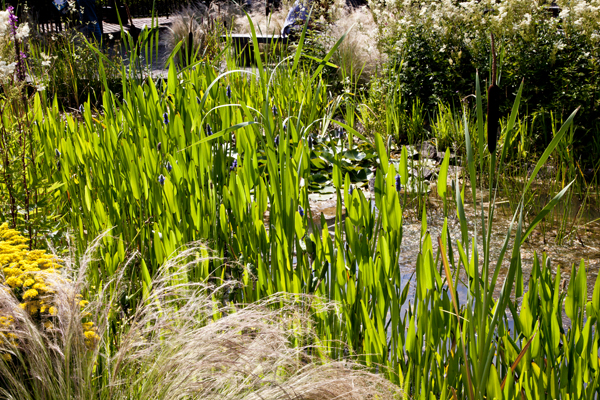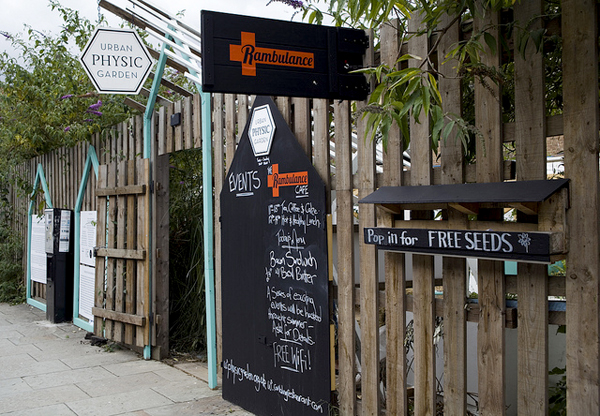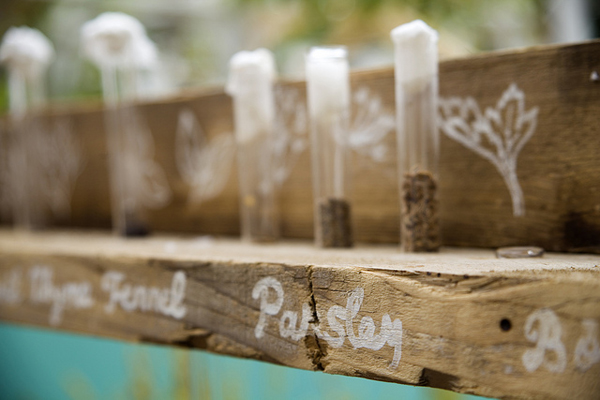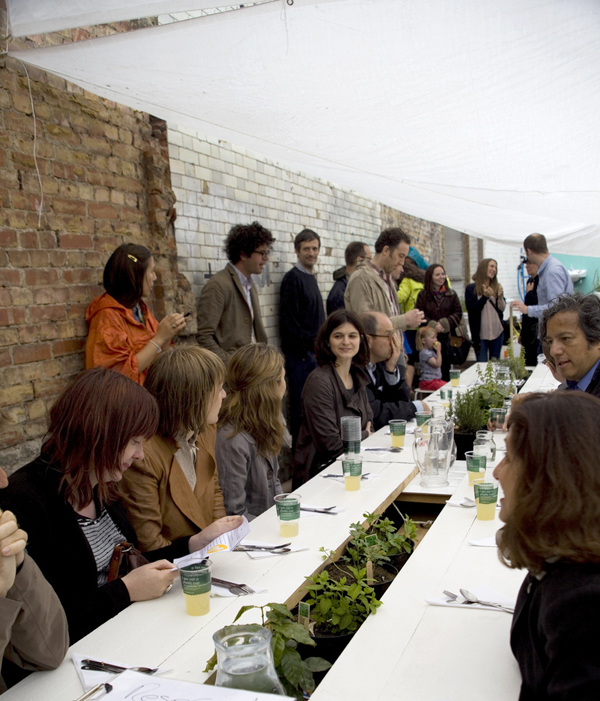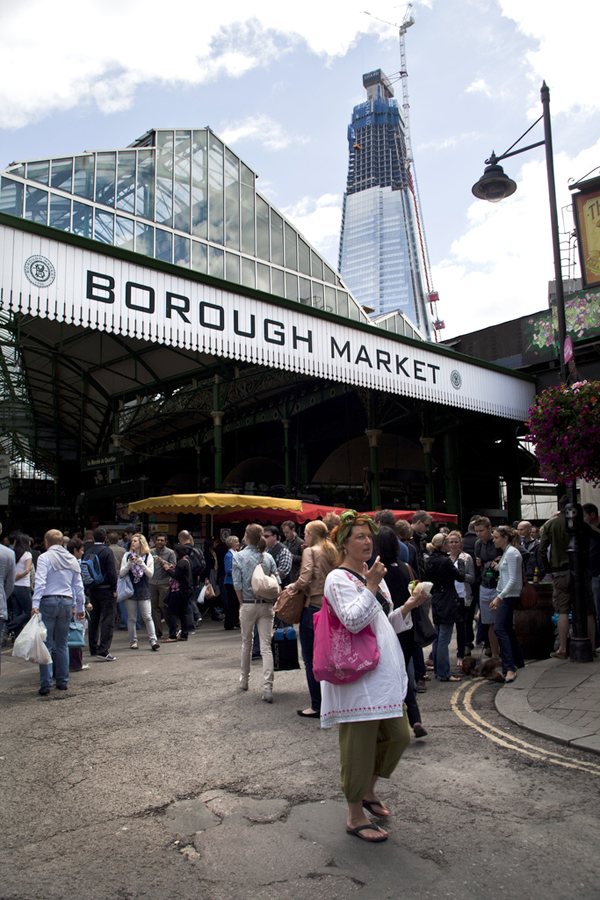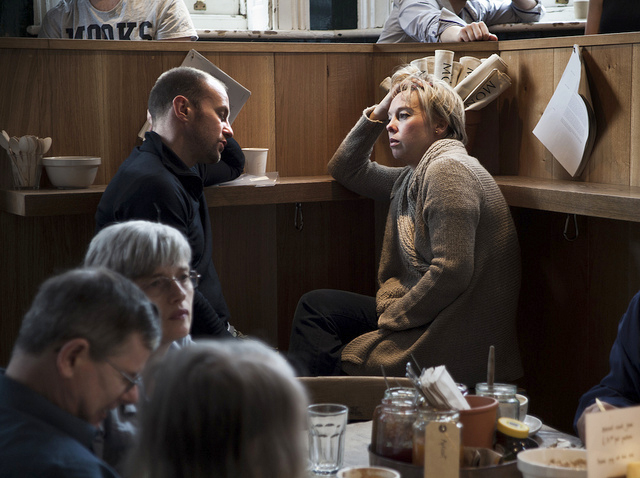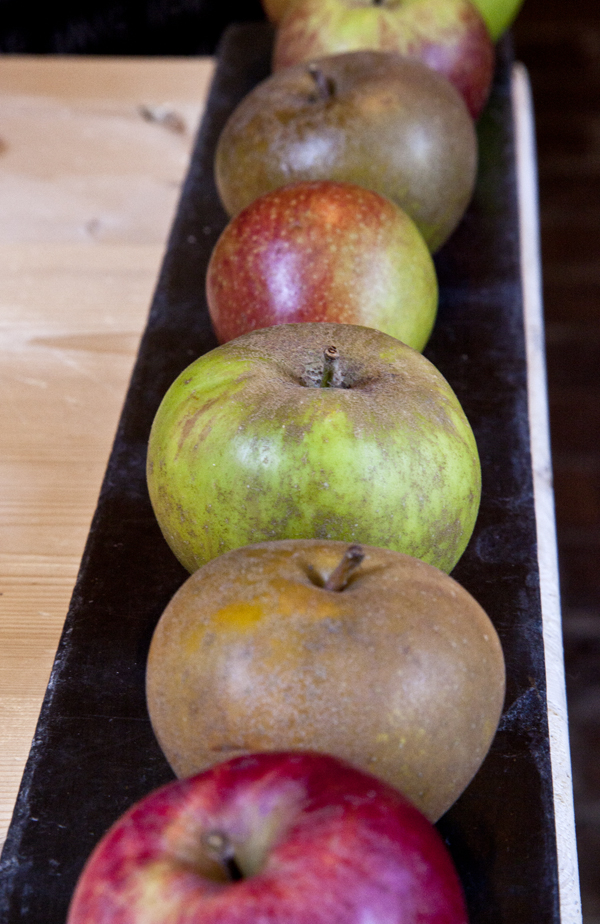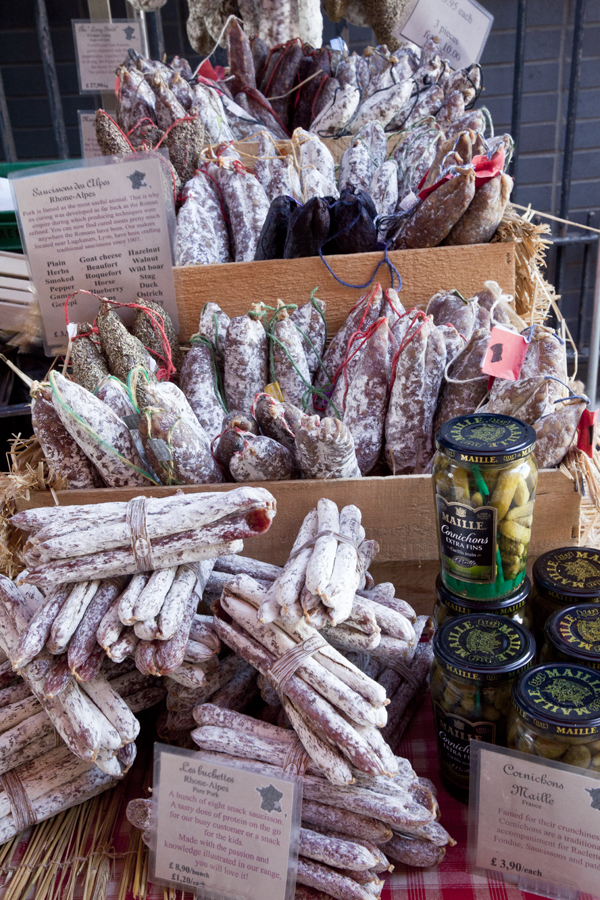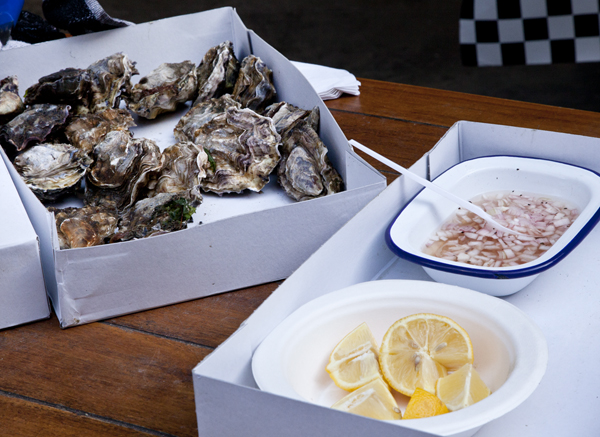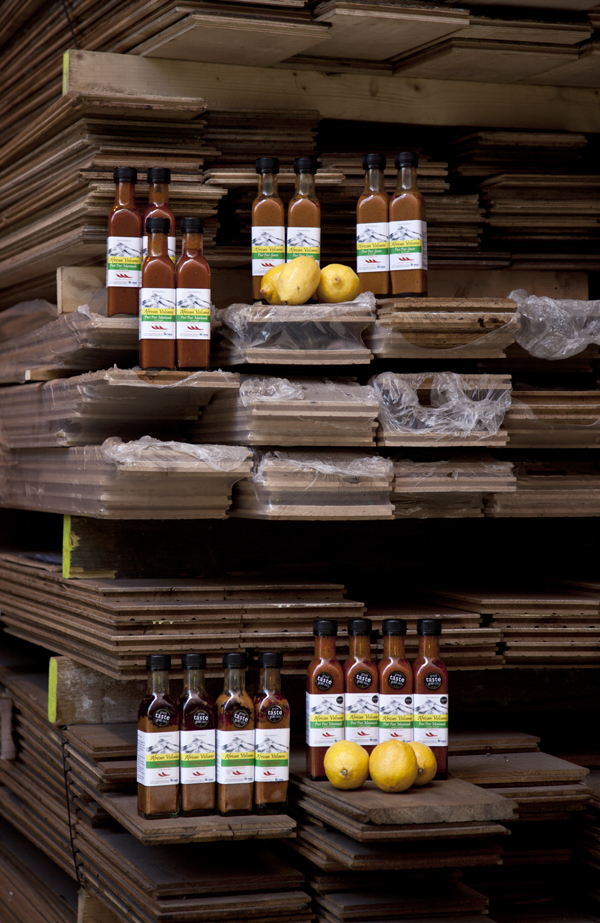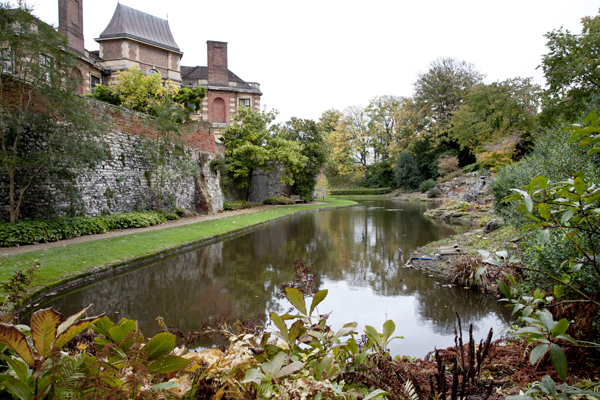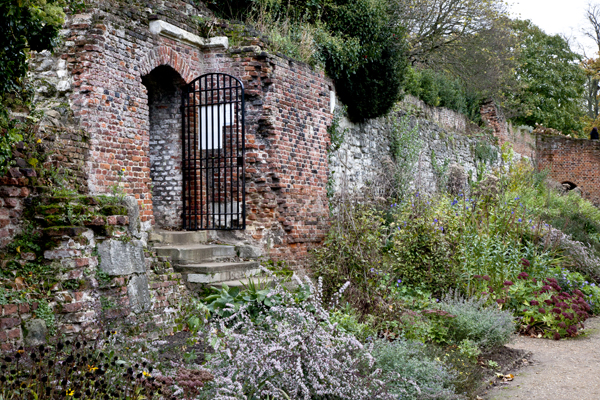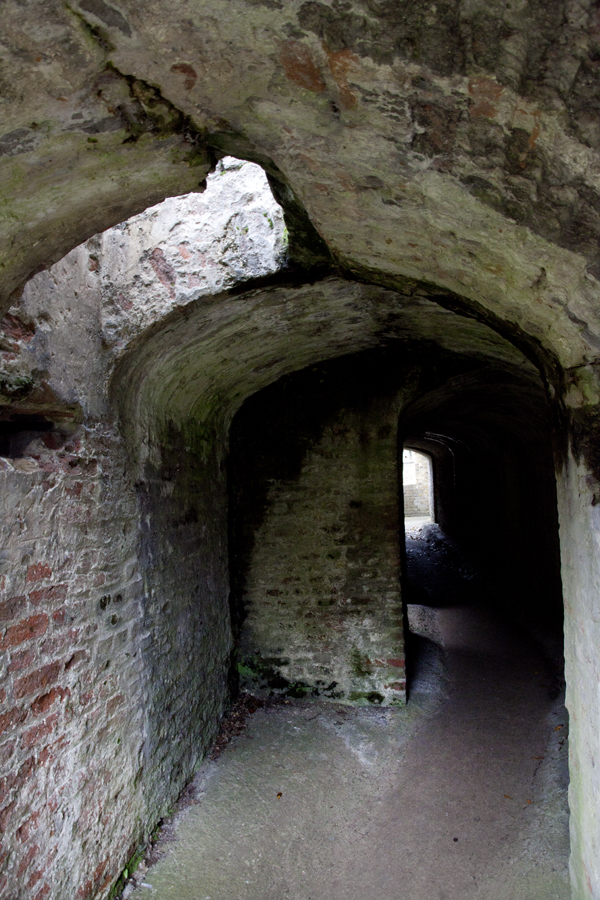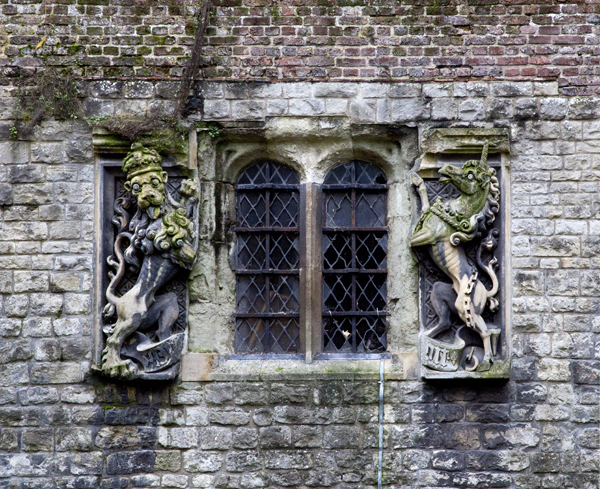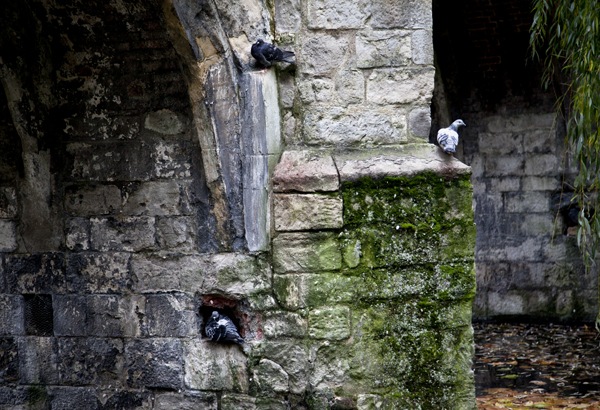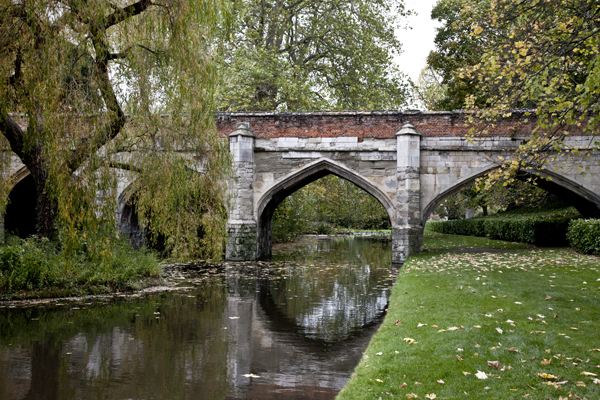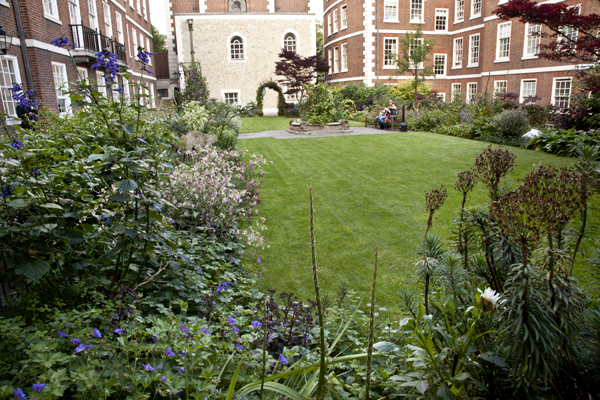 [Harry Parr, left, Sam Bompas, right]
[Harry Parr, left, Sam Bompas, right]
It was the red velvet bow tie that caught my eye first…then the huge fluffy winter coat…then the electric green Turnbull & Asser socks…then the sharp, windswept slant of a blonde quiff…then the perfect pouty lips. There was nothing else for it, – I simply had to say hello. For Sam Bompas, – jellymonger, architectural foodsmith, cuisine conjuror, and one half of Bompas & Parr, – is one of those people that you just don’t easily forget. His natty mien, as he himself proclaims, is ‘Vincent Price on ether’ due to his penchant for fluorescent slime green. A lasting ramification from his mother’s fancy dress parties that now blurs the line between work and play for both Sam and his partner Harry Parr. Placed together as children in Eton’s school orchestra and reciprocal in their apparent lack of skill (Sam on the violin, Harry on the cello.), a friendship arose that grew beyond their school days when one night Harry cooked a feast of sorts that culminated in a show-stopping jelly…thus beginning the adventures of ‘Bompas &Parr’.
[mercedes drive thru]









How one could feasibly believe there was a niche in the market for jelly is beyond anyone, but ‘niche’ is indeed what they have found. Their first venture saw a table full of architectural jelly shapes concluding with an unintentional food fight, that has followed up with glow-in-the-dark gin & tonic jelly, ‘Absinthe Jelly Ronson’ created specially for DJ Mark Ronson’s birthday bash, aphrodisiac jellies in the form of boobs , ‘flaming jelly’ and even an entire Christmas dinner jelly. Sam recalls, “with a distinctly misguided spirit of adventure, we once created an entire Christmas dinner in one tall and very wobbly striped jelly. There were layers of sprouts, parsnips, potatoes, stuffing, bread sauce and, of course, turkey consommé studded with artfully positioned mini sausages and bacon rashers…(with) foothills made of champagne, burgundy, port and sherry.” It’s this principal guideline of humour, precariousness and escapade that permeates through all of Sam & Harry’s work. Since setting up business together in 2007, Sam and Harry have ventured with Alcoholic Architecture with a breathable gin & tonic, an Architectural Punchbowl where they flooded a Robert Adam building with 4 tonnes of Courvoisier Punch enough for 25,000 people, Scratch & Sniff Cinema where key moments of the Peter Greenaway film ‘The Cook, The Thief, His Wife and Her Lover’ were accentuated with such aromas as rotting meat and dusty books, flavour-changing chewing gum, levitating plates of strawberries, a five tonne chocolate waterfall and the roof of Selfridges that was transformed into a green lake complete with boats and a waterfall to row through. (umbrellas were kindly provided in full knowledge of how easy it is to row a boat and hold the implement at the same time) The following year saw the exact same roof converted into a mini golf course with punters having to cautiously monoeuver around a setting of giant cakes. In the last 3 consecutive years Sam and Harry have also found the time to churn out their illustrious and eye-popping books ‘Jelly’ (includes both a wedding and funeral jelly), ‘Cocktails’ (ether cocktail and the “blisteringly expensive” Royal Usquebaugh) and the latest ‘Feasting’ (caped turkey and glitter ham!), – all focussing on the creative and spectacular side of cooking and entertaining.
[chocolate waterfall]





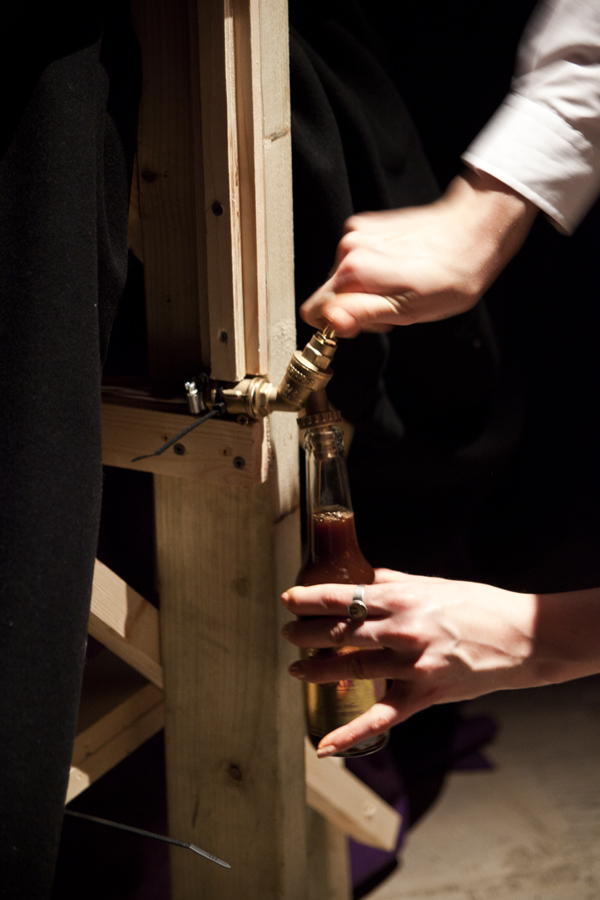

While Sam seems content in imagining up the fantastical narrative side of things and deliberating the audience reaction, it comes down to Harry and his architectural learning to look at the plausibility and technicalities of each project, which is what makes the whole operation sound. They function together like shadow and light, a yin to the other’s yang, creating a perfection in balance. Sam recalls, “our best ideas come out of Harry and I having a massive argument. I hate what Harry comes out with and he thinks half of what I say is rubbish, but what we get at the end is better than anything either of us could come up with on our own.”
[the truvia voyage of discovery]















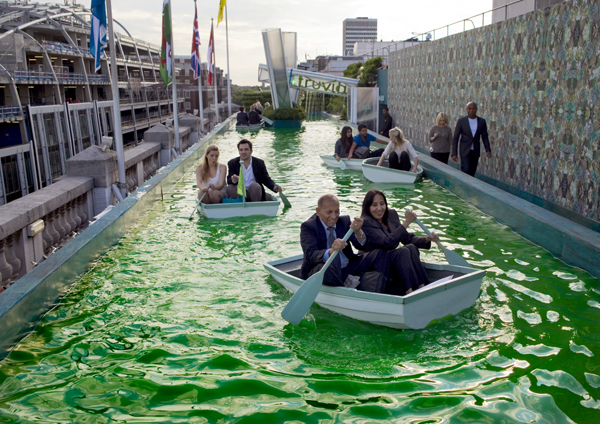
When you stand back from it all you have to admit that it is the kind of job you can only dream of, I mean, hands up who didn’t want to be Willy Wonka when they were growing up? To have taken a bonkers idea to such extraordinary heights and make it financially viable is simply unheard of. When the famed Victorian chef Alexis Soyer took over Gore House (now the Royal Albert Hall) in 1850 for his pop-up dining experience, ‘Soyer’s Universal Symposium of All Nations’ to coincide with the 1851 Great Exhibition at Crystal Palace, so extravagant was the undertaking that they were forced to close the doors at the end of the exhibition with a loss of £7000. The Standard reported on Monday April 28th, 1851, – “You enter the doorway, and stand in the Vestibule de la Fille de L’Orage, you read, ‘Soyer’s Symposium’, struck by arrows of lightning from a hand clenched convulsively over the head. From this you pass into L’atelier de Michel Ange, the walls of which are covered with the existent marvels of architectural and engineering art – the Pyramids, the Palace of Westminster, St. Paul’s, Pompey’s Pillar, the Tubular Bridge, and the like, shouldering each other with amusing defiance of time and concord. Turning to the right, the visitor finds himself in what once was the Blessington Library, but now La Salle du Parnasse in plainer and less metaphorical English, a spacious dining-room, brilliantly fitted with mirrors, marble consoles, and Grecian vases, the prevailing characteristic of white and gold being extremely effective, and affording a delicate contrast to the ‘Salle des Noces de Danaë, the speciality of which is the Alhambra spirit of the ceiling, displayed in its gorgeous varieties of colour, while gem-like tears cover the pale green walls, dropping, as it were, from the heavily gilt cornice. The eight globes of silvered glass which are to hang here will produce an ensemble, when reflecting the floods of gas with which the salle will be charged of which, we can form but little conception….the ante-chambers of the mansion of which is striped and starred a la Jonathan.. La Cabinet de la Pompadour – embellished with flutings of white and pink, and a triumphant arch of roses and foliage; La Foret Peruvienne, the colour of which is blue.. La Chambre ardents d’Apollon a circular apartment, intended for the Ghebirs, who can, if they like, before they eat their curried spiders, prostrate themselves before the before the brazen sun which fills half the plafond with its circumference..Grotte des Neiges Eternelles encrusted with sparkling pendents…Vintage Palazzo, Italian Saloon enclosed in a trellised gallery overhung with vine leaves, through which the eye looks upon the plains of Lombardy, the fastnesses of Calabris, and the ruins of Campagns…Bourdoir de la Valliere, enter the state bed-chamber, papered with zig-zag stripes and diagonal bands of black velvet and silver lace… Pagode du Cheval de Bronze, Chinese hall, tea-chest, crimson curtains, statuettes of Fo and Buddha, fat-bodied bronzes and lantern.”
[feast book launch]








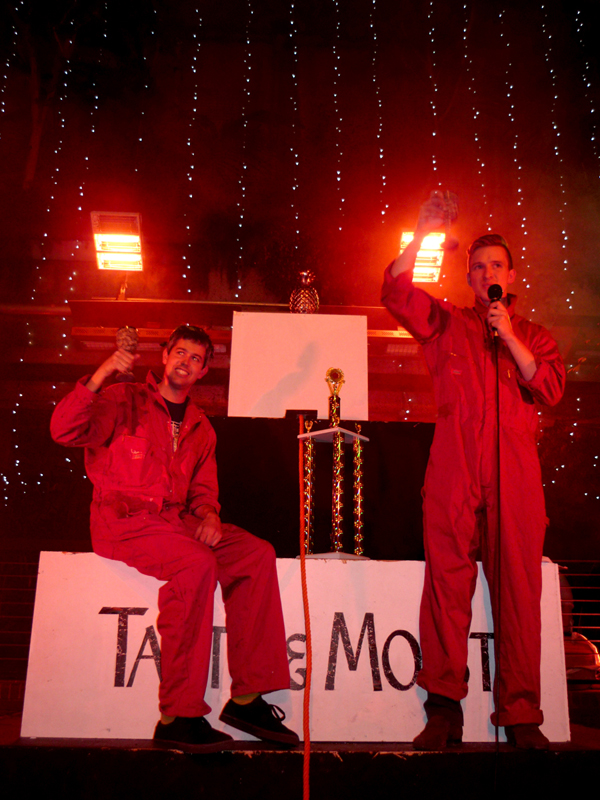
The theatrical immersion of Soyer strikes very similar to the heart of what Sam and Harry are trying to achieve. However, they take it one step further in the fact that the audience has to participate and becomes part of the experience. For example, with the chocolate waterfall, one had to walk the rickety bridge over the cascading chocolate, without doing an Augustus Gloop, in order to bottle your own prize, and with the Truvia lake on top of Selfridges one had to row through a waterfall and completely drench oneself in order to reach the cocktail bar. The pioneering Soyer went on to introduce gas ovens and portable cookers that enabled the setting up of soup kitchens in the Irish Great Famine (1845-52) and hospital catering during the Crimean War. He cooked flamboyant feasts for Royalty and High Society, yet died a penniless man. He lived beyond his years and beyond his purse strings. In short, he had the vision but not the sense to go with it. This is why I think Sam and Harry have got it right. They have a strong team, friends and family that are always ready to muck in and backers that believe they can go all the way. Besides…it is their time. And with my own Willy Wonka dreams firmly dashed, I can only comfort myself in the knowledge that two people out there actually made the realization come true, are having their cake (or should I say jelly) and eating it too.
[cocktails book launch]



I managed to corner Sam to explain himself…
Your work encompasses so many extraordinary skills and feats, just how would you coin your job description – food magicians, sensatory chefs perhaps? We’re not exactly precious about labels and definitions. Over the last year we’ve exhibited at the Garage Centre of Contemporary Culture, built a cake based crazy golf course on the roof of Selfridges, published a book on feasting and fabricated cooking equipment from the dawn of time. The most important thing is doing epically brilliant work. These days there are no boundaries to creativity. It can make for a confusing and furious life though. We’re quite competitive this means all cooks, architects, designers, artists, photographer, art directors and curators are potential rivals. At the moment it takes so long to explain the sorts of things we do that at parties I just say I’m an accountant.
What’s a normal day on the plate of Sam? Is it glow-in-the-dark jelly for breakfast, popping candy for lunch, breathable gin and tonic as an aperitif before donut burgers for dinner? Do you have any particular favourite restaurants in London? For the most part our noses are two the grindstone. A great shame as this means Topps Pizza, and the local news agent (for beers) benefit most from our business. Hardly fine dining but it keeps us buzzed on a sugar, fat, salt high. Given the chance we escape to the Boot and Flogger, the UK’s only venue allowed to serve alcohol without license. The owner is a freeman of the city and Vintner so gets a special dispensation. Or we go for meat at Hawksmoor; their dishes are savage. On grand occasions, high days and celebrations Viajante holds the key. Nuno Mendes is the master.
When planning events, where’s your starting point, – the ingredient, the narrative, or the location? Projects involve joining up a whole constellation of ideas, locations, ingredients, skills and resources. The trick is to try to conceive something that you don’t totally know how to do. That way you learn on the way and get another tool for the box. The more tools in the box the better.
The spaces you and Harry create often render the audience to regress to childhood delight, a playground for adults of sorts. Would this be intentional on your part? We don’t go for childishness but do rather encourage visitors to lose their inhibition. The best installations will induce the sensual pleasure of childhood enhanced with the learning that comes with age. So you may be boating across a lake of alcoholic punch (Architectural Punch Bowl) but this experience is further enchanted by the months of research, design, collaboration with engineers, architects, mixologists and so forth that support the project.
Does it bother you that people constantly compare you and Harry to Willy Wonka and Heston Blumenthal? It can take quite a long time to explain what we do so it can be handy for people to use references. It’s cool if they want to do this. After all both Heston Blumenthal and Willl Wonka have been hugely inspirational and guiding stars. Harry is actually at Dinner in the Manderin Oriental right now. He’s been taken for his 30th Birthday.
What do your friends and family reckon on your work? At first they probably though it was absurd, but they’ve all been valiant in providing support. Our parents have been staunch allies when we chucked in proper jobs to work with jelly. At the Jelly Banquet (one of the first events we did) Harry’s parents were the first on site fixing up the 10m self-wobbling jelly table while mine were the last off site. At the time we hadn’t realised that 2000 people jelly wrestling and having a jelly fight would cause such a mess! We are hugely grateful.
You didn’t train as a chef, so how do you get your knowledge and expertise? Do you seek advice from other chefs? Do they ever turn their nose up at your food designs? We’ve now worked in the food industry longer than any other industry. Is that a qualification? In all fairness we don’t set ourselves up in competition to chefs. On many occasions we have been lucky enough to work alongside and learn from some of our culinary heroes. It was pretty wild doing the dessert course for a dinner the mighty Fergus Henderson was cooking for the Oxford Food Symposium some years back. We ended up realising the Great Fire of London in jelly spread across 6 tables.
You’ve certainly found your niche, but before things became big, did you have your doubts? The key is to just plug away.
You’ve moved away from jelly more recently, any plans of it making a comeback or have you taken it as far as it can go? What other tricks have you got planned for the future? The jelly is still a strong theme. Each week we work on several jelly commissions and the strange thing is there’s still more to explore with the medium. Probably my favourite project this year was jelly based setting Brunel’s SS Great Britain in a fruity gel matrix. The lime jelly measured the length of two Olympic swimming pools and weighed 55 tonnes. I guess it’s a world record. And the future? Next year’s pretty busy. We’re fairly well booked up. First up is an ice project with scanLAB who voyaged to the Arctic to survey the disappearing iceflows. Check out their release attached. We’ll be providing visitors to their show at the Architecture Association with Talisker based lollies. They’ll be exact scale replicas of the ice flows they scanned so you can run your tongue over the grooves of the disappearing forms of Arctic ice.
Your parents took you to Dennis Severs’ House as a young child, – was your childhood quite progressive and was there a big encouragement in your creative growth? My mother’s an art teacher and father is a wonderful storyteller. Beyond that they were determined to let me make my own choices (and mistakes) in life.
You often cite the innovative chef Alexis Soyer as a great influence. What mainly attracts you to him and do you often look to the past for ideas? Soyer is an absolute hero of ours. The Victorian equivalent of Jamie Oliver, a showman with great swagger and panache but with a big enough heart to try to solve the Irish Potato Famine. We look to the past as history is a great editor. If something is still being printed or documented 200 years down the line it’s probably pretty good. There’s an added bonus too. If you look to the past for ideas no-one’s alive to accuse you of ripping of their work. Being dead, they can’t punch you out at the next soiree. That said there’s no point slavishly copying. You’ve got to find your own way to make it special. At least if you are looking at projects that are hundreds of years old they aren’t all over the internet which is where everyone else is looking. We spend a good deal of time tearing through the archives of the London Library. There’s a great wealth of forgotten knowledge that can be used to re-enchant what people put in their mouths. Every so often we’ll run to ground an obscure menu, ancient food treatise or most recently a Memoir of a Stomach that will serve as inspiration for a future project.
Tell me about the dynamics of the way you and Harry work together? Since Harry studied architecture, does he concern himself with structural soundness and you with the visual soundness, or do you mix roles around a bit? The best analogy is probably restaurant based. I do the front of house work while Harry is the powerhouse in the kitchen with all the heat and sweat that entails.
Your first event apparently ended in a massive food fight. Is this true? The Jelly Banquet descended into an all out jelly fight. The greatest London has ever known. It took a solid five hours to clean up and stained an entire lawn red for weeks.
Choose 5 people, living or dead, that you would love to cook a feast for.
Ivan Day – the brilliant food historian (alive)
Vincent Price – horror actor and connoisseur (dead)
Josephine Baker – rights activist, spy, banana dancer (dead)
P.T. Barnum – showman, mermaid importer (dead)
Aleister Crowley – mountaineer, Satanist, mixologist (dead)
What 5 household items prove indispensable to the world of Bompas & Parr? Gaffer tape, bin bags, ultrasonic oscillators (used in fish ponds), gelatine, pigs heads.(actually easy to find just ask your butcher)
What has been yours and Harry’s happiest moment so far? Building Alcoholic Architecture a breathable cloud of G&T that intoxicated through the lungs and eyeballs. It was just me, Harry, lovely Robin from Robin Collective and our girlfriends giving it the final paint job yet the results were felt around the world. You never got a hangover either from alcohol by eyeball.
How would you spice up the Christmas celebrations? All our secret tips and tricks are outlined in great detail in Feasting with Bompas & Parr.
Do you have an exciting recipe for a Christmas jelly you could give me?
For sure:
Hippocras Christmas Pudding Jelly
There is real scope to bring back the jelly as a Christmas dessert and alternative to heavy Christmas puddings. Stomachs need to be respected – indeed, the Victorians often referred to them as amiable gentlemen – and a light jelly makes a spectacular and much more manageable alternative. We’ll demonstrate that you can ditch the Christmas pudding but lose none of the traditions. For this jelly, we use a recipe once enjoyed by Henry VIII and which the notorious serial killer Gilles de Rais called ‘Jelly Hippocras‘. As with traditional Christmas pudding, it’s important that 13 ingredients are used to represent Jesus and his disciples. Interestingly, Christmas puddings were banned by the Puritans in 1664 for being lewd. If they had seen the wobble on this Christmas pudding, they’d have been even more shocked. The golden age of jelly and the origins of Modern Christmas both come from the same period: the Victorians are responsible for both. Christmas trees were not popularized until 1848, when the Royal Family were pictured standing in front of one. At this date, jelly was considered a fine centrepiece and was often laid along the table for the entirety of the meal. Sadly, jellies no longer take centre stage at Christmas, though they continue to play important supporting rolls. We’re all familiar with cranberry and red-currant jelly. And jams and preserves, close relatives to jellies, come in to their own at this time of year, as fresh fruit is in short supply. The Victorians set lots of small keepsakes within their Christmas puddings, which were used to foretell the future. If you set items in the jelly, you can do the same. If you discover a ring, the next year brings true love; coins bring wealth; and thimbles are the booby prize. If you get this in your pudding, you remain single forever!
To make the Hippocras
Hippocras improves with resting, but if you don’t plan a meal a month in advance it will still be just fine. This recipe give you more than you will need for a Christmas pudding for four, so you can serve the rest at drinks parties around the festive period.
3 bottles red wine
200g/7oz/1cup sugar
1 cinnamon stick
2 tsp ground gigner
1 tsp grated nutmeg
1 tsp cloves
1 tsp crushed cardammon seeds
10 black peppercorns pinchr
All you have to do is add everything to a large stock pot and place heat gently for 1 hour. At this point, it can be strained and stored in sterilized bottles as necessary. Traditionally, the wine would steep in the spices for a week or more before being strained.
To make the Christmas Pudding Jelly
5 leaves of gelatine
500ml/18fl oz/generous 2 cups hippocras
2 tsp rasins
2 tsp candied citrus peel
1 ring
1 small coin
1 thimble
Cut the leaf gelatine into a heatproof bowl with a pair of scissors. Add 100ml/3½fl oz/scant ½ cup of hippocras to cover the gelatine. Leave the gelatine to soften for 10 minutes. Bring a pan of water to the boil and place the bowl of softened gelatine on top of the pan. Once the gelatine has totally melted, add the rest of the hippocras to the mixture before passing the lot through a sieve (strainer) and back into a bowl. Place the bowl with the cooling jelly over a larger bowl filled with ice. Now stir until the mixture starts to thicken. At this point, you can add the raisins, candied peel and metal! You need to stir the jelly to the point that you can get all your objects evenly distributed but not so much that the jelly is excessively lumpy. It still has to be able to fill all the contours of your mould (or pudding basin). When the jelly is just right, encourage it into a mould and place in the refrigerator to finish setting. All that’s now left is to unmould the jelly and discover who is going to be unlucky in love for the rest of their life. If you’re going all out, garnish the jelly with holy and pour over 1 tablespoon of rum before igniting the jelly. Happy Christmas!
Lastly, your fantasy party – what, where, who and why? At the moment it is probably this fellow: ‘Horses up the Skyscraper’ (1903): The millionaire C. K. Billings held a feast for the Equestrian club of New York at the top of a skyscraper. Billings brought 32 horses up to Louis Sherry’s restaurant in the lift. Guests ate on horseback, ripping into pheasant in feed bags and drinking champagne from rubber casks.
Party on!

Now Available at most good bookshops:



WISHING YOU ALL AN AMAZING CHRISTMAS & NEW YEAR!



























